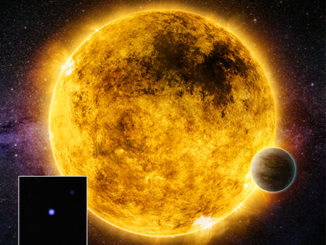
The planet-hunting Kepler spacecraft has finally run out of fuel, ending one of NASA’s most successful missions after nine-and-a-half years and the discovery of at least 2,681 confirmed exoplanets and another 2,899 candidates. By statistical extrapolation, Kepler observations indicate 20 to 50 percent of the stars in the Milky Way likely host rocky worlds similar to Earth in the habitable zones around their suns where water can exist as a liquid and life as it’s known on Earth could, in theory, exist.
“Kepler has … revolutionised our understanding of our place in the cosmos,” said Paul Hertz, director of astrophysics at NASA Headquarters in Washington.
“Before we launched Kepler, we didn’t know if planets were common or rare in our galaxy. But now we know, because of the Kepler space telescope and its science mission, that planets are more common than stars in our galaxy. Now we know there are billions of planets that are rocky like the Earth and are orbiting their stars in the habitable zone, or the Goldilocks zone, where their temperatures might be conducive to water on the surface.”
Bill Borucki, the original principal investigator and the man who convinced NASA to build and launch the $692 million mission, called the project “an enormous success.”
“We have shown there are more planets than stars in our galaxy, that many of these planets are roughly the size of the Earth and some, like the Earth, are at the right distance from their star that there could be liquid water on the surface,” he said.
“We’ve also discovered planets completely unlike those in our solar system. Some of those, in fact, might be actual water worlds. We’ve also found planets that were formed at the beginning of the formation of our galaxy six-and-=a-half billion years before the formation of our own star and before the formation of the Earth. Imagine what life might be like on such planets.”
Kepler was launched atop a Delta 2 rocket in March 2009 and placed into an orbit around the Sun, aiming its 95-megapixel camera at a patch of sky near the constellation Cygnus that contains more than 4.5 million detectable stars. By measuring the tell-tale dimming of starlight as a planet moved in front of its sun as viewed from Earth, scientists could detect the presence of planets, determine their orbits and their relative sizes.
In 2014, Kepler suffered a second reaction wheel failure, ending its ability to stay solidly locked on target. But engineers eventually came up with a clever workaround, figuring out a way to use the spacecraft’s two remaining wheels and the pressure of sunlight to maintain stability. But Kepler still needed rocket fuel to operate normally and it eventually ran out.
Engineers managed to downlink the last of the spacecraft’s stored data before they lost pointing control.
“In the end, we didn’t have a drop of fuel left for anything else,” said Charlie Sobeck, the Kepler project system engineer.
“Because of fuel exhaustion, the Kepler spacecraft has reached the end of its service life,” he told reporters 30 October. “While this may be a sad event, we’re by no means unhappy with the performance of this marvellous machine. Kepler’s nine-and-a-half-year flight was more than twice the original target.”
Added Jessie Dotson, Kepler project scientist at NASA’s Ames Research Center: “I guess I feel like it was the little spacecraft that could. It always did everything we asked of it and sometimes more.”
A new, state-of-the-art planet hunter — the Transiting Exoplanet Survey Satellite, or TESS — was launched last April. It is designed to cover an area 400 times larger than Kepler could manage and is expected to find some 20,000 or more exoplanets during the course of its mission.



